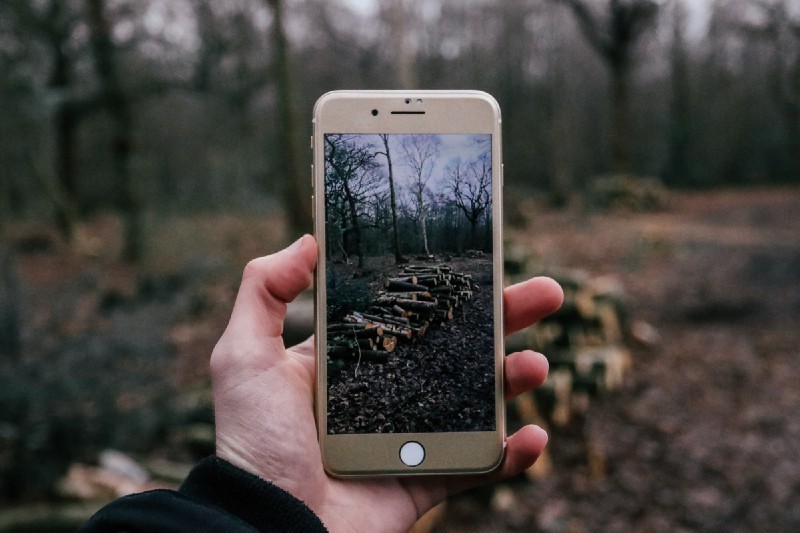Being present and mindful in a world of hyper-connectivity.
We live in a world of hyper-connectivity. Every day I have a connection with someone who is somewhere else other than where I am. They are not just in another part of the city or the country, but in another part of the world.
Some of us can remember a time when to be connected with someone who is somewhere else, you had to write a letter, send a telegram (!)) or at the very least, get up and go to another room and use a telephone which was stationary and connected to a wall. A “long distance phone call” to another part of the world meant you invested time and a bit more money and a lot more focus on your conversation. In those days, if you were sharing a meal, watching a film, spending time with your children, family or friends, in order to talk to someone else, somewhere else, you had to remove yourself from that room and exit that situation to proceed. If it was during a particularly significant gathering, you would have to excuse yourself from their company or tell that person somewhere else on the line that you would ring them back later. Parents, in those ancient times, would despair that their teenage daughter absented herself for great swathes of time to chit chat on the phone in another room.

Now this is all changed. We can sit right here where we are now, in our house, in our office, at our desk, and have a conversation, perhaps multiple conversations all at once, with people who are literally everywhere. I am, you are, we are super-hyper connected. Is this convenient, incredible and extremely cool or what? Plus, in an instant, I can know what is happening in the whole world. And I love being so connected with the world, and my friends, who are everywhere. Now that we have mastered the ability to“multi-task”, I am checking out or talking to someone else, but I am here with you too, supposedly. Or am I?
A recent survey showed that 54% of people born in the internet age say that they prefer texting to talking to people. But 60% also said they felt that their family would benefit from “device free time”. And rightly so. Because this is what happens: I am here with you and you are there with someone else. That’s exactly what it is, in a room, at a restaurant, on the tube. I am here with you, friend, family or stranger, and you are talking with someone else and are somewhere else. In another study, 70% of people said the smartphone was ruining their romance or relationship. Their relationship with whom? Their partner? Or everyone here, now, as well?
In our house we have had this discussion a number of times about this hyper-connectivity, as in, I am here in front of you, and maybe only for a precious little time. Do you want to be talking to someone else? Looking at something else? In one sense, what could be a greater affront?

Although there was a time when family in the same room, the same car, at the same table spoke to each other, perhaps there was never a time when strangers spoke to strangers on say, public transport. But today, casting a glance down the car of the train, every person has a device and every device has a person. Are we all strangers, strangely disconnected? Do we all want to be somewhere else, with someone else, every single moment?
Walt Whitman wrote: “Whether I walk the streets of Manhattan, or stand under trees in the woods, or look at strangers opposite me riding in the car…I know of nothing else but miracles…”, truly a vision through being here now.
Here’s a little worthwhile practice I have employed on the tube: Okay you are pressed for time. You can check the urgent emails from this stop to that one; skim the news between that stop and the next; and then from here to, oh I don’t know, eternity, I can relax, and just be here now. Is it so awful? I can just sit, and breathe, look around, close my eyes, think, feel, or maybe read, as in “book”. A book, you find, you can put down, take time to digest, absorb the message. Your other senses don’t completely shut down. It’s not screaming at you to constantly be stabbing at it.
Not long ago on the tube, I happened to be reading a book about, of all things, mindfulness. The chapter heading was, “We are All Linked to Each Other”. Yes, it really was. I suddenly had this sense that someone was looking over my shoulder. For quite some time, it seemed when I looked up, this “stranger” had been reading my book too. A smile; two smiles; a look; a recognition; a non-verbal exchange:
Yes, I was reading your book, you don’t mind, do you? No, not at all. It’s good, isn’t it, the message? You’re telling me; I’m blown away.
There was a fleeting moment of ineffable beauty and connection, before the “stranger” disappeared at the next stop. Words cannot express human connection, what happens in a mindful moment. You don’t have to wait for it to happen in a movie.

For some time I have reflected on the conundrum of our uber-connectivity and our dis-connectivity. You cannot, have not, will not, ever, connect like that with a device, marvellous though those communications may be. That is why to improve communication we go from text to voice to face, as in Skype, getting ever closer to the real thing, or further away as we might prefer! We could teach this as a valuable first lesson in IT 101, before introducing the digital world to five-year-olds? “What is the difference between a real person and a device?”
I hope today, in a public place, for just a moment, you can find time to put down your phone or your tablet, unplug your headset, have a look around, and think about that. “Welcome to wherever you are”.
A very wise teacher has said: “To be loved, is to be recognized as existing”. To be wonderfully, globally connected, but miss what can be loved in this present moment, is but a very great loss indeed.
Images from Claire Beynon: http://www.clairebeynon.com/
Originally published at medium.com


